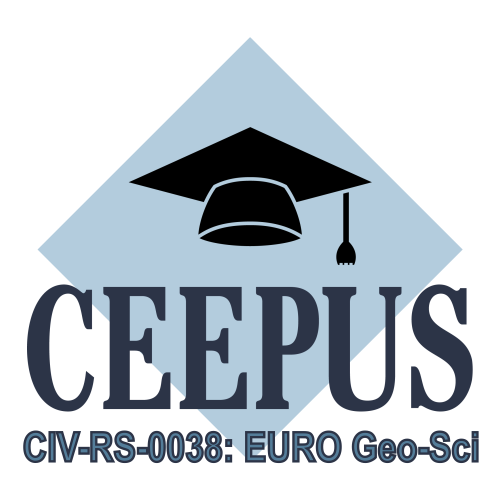We would like to invite you to an open lecture entitled “Agricultural abandoned lands as emission sources of dust containing metals and pesticides in the Sonora-Arizona Desert” by Prof. Diana Meza-Figueroa from University of Sonora, Mexico.
The lecture is organized as part of the “Research University Excellence Initiative” (IDUB) program and will take place during the Scientific Webinar of the Institute of Geological Sciences UWr on Friday, May 24th, 2024 at 12:00, hybrid:
– In lecture room no. 220 in the Institute of Geological Sciences UWr (9, Maks Born Square Wrocław, II floor) as well as – online in TEAMS
Details:
Abstract
The Green Revolution or Third Agricultural Revolution was a period of changes in agricultural technologies leading to an increment in crop yields, mainly cereals. Such changes involved the extensive use of chemical fertilizers, mechanization, and pesticides. In Mexico, the Green Revolution began in Sonora. This research examines the transport of metal- and pesticide-polluted dust emitted by an historic agricultural area near the city of Hermosillo. The excessive water extraction of the local aquifer and a seawater intrusion cause the abandonment of fields, which are pollutant-loaded emitters. We used air mass forward trajectories (HYSPLIT) model to obtain particle trajectories in the wind and the use of banned pesticides as geochemical tracers for dust transported by wind. Fifty dust samples from 10 agriculture fields and 26 roof dust of a city close to the agricultural area were analyzed for their contents of zirconium, lead, arsenic, zinc, copper, iron, manganese, vanadium, and titanium, by portable X-ray fluorescence. Nine pesticides were analyzed in the roof dust and agricultural soil samples by gas chromatography. Results show that the distribution of metals was significantly different between active and abandoned fields. Arsenic-lead-copper was mainly concentrated in abandoned fields, while zinc- iron-manganese-titanium was dominant in active fields. Two potential sources of metal contamination were found by principal component analysis (PCA): (I) a mixture of traffic and agricultural sources and (II) a group related to agricultural activities. The occurrence of banned pesticides in dust deposited on roofs collected at nearby cities confirms the atmospheric transport from the agricultural area. The HYSPLIT results indicated that the dust emitted from agricultural fields can reach up to the neighboring states of Sonora, Mexico, and the USA. The impacts that these emissions can have on human health should be studied in future research.
Biography of Prof. Diana Meza-Figueroa, University of Sonora, Mexico
Professor Meza holds a PhD from the University of Arizona. Geologist graduated from the University of Sonora. She is a member of the Mexican Academy of Sciences. She uses geochemical tools for the identification of natural and anthropogenic sources of pollutants in dust and atmospheric particles. She also uses in vitro methods for the determination of pulmonary and oral bioaccessibility of metals. Recently, she has collaborated in the characterization of crystalline nanoparticles in urban dust and volcanic ash. She works with environmental toxicologists to corroborate risk models based on biomarkers of exposure and/or effect. Founding member of the Dean Carter Binational Center for Toxicology and Environmental Science at the University of Arizona; National Laboratory on Atmosphere and Climate in Mexico. Supervised 39 Ph.D., M.S. and B.S. theses. She has 77 indexed articles, 5 book chapters, 1593 citations (SCOPUS, H=22). She has directed/collaborated in 18 externally funded projects.
